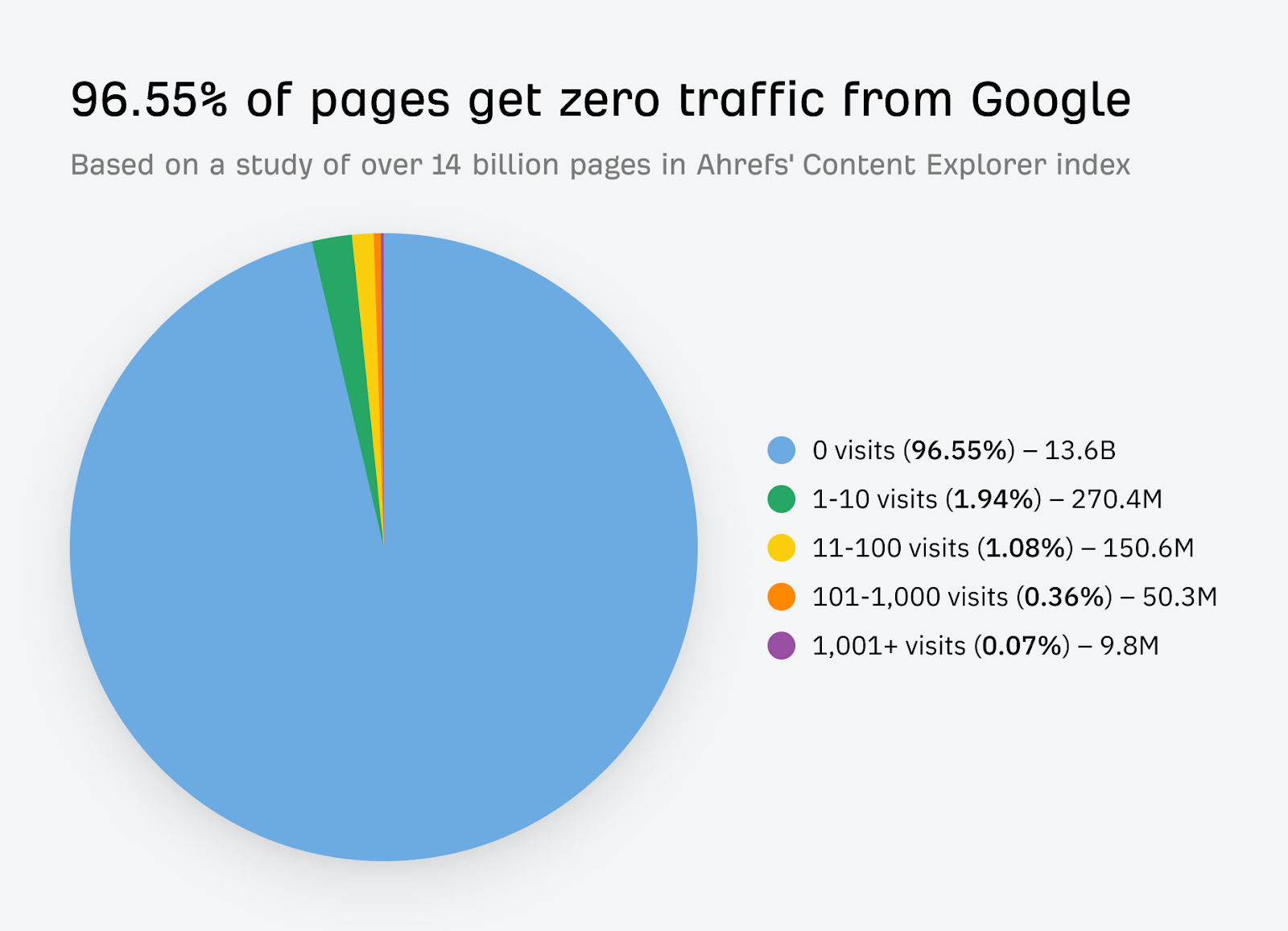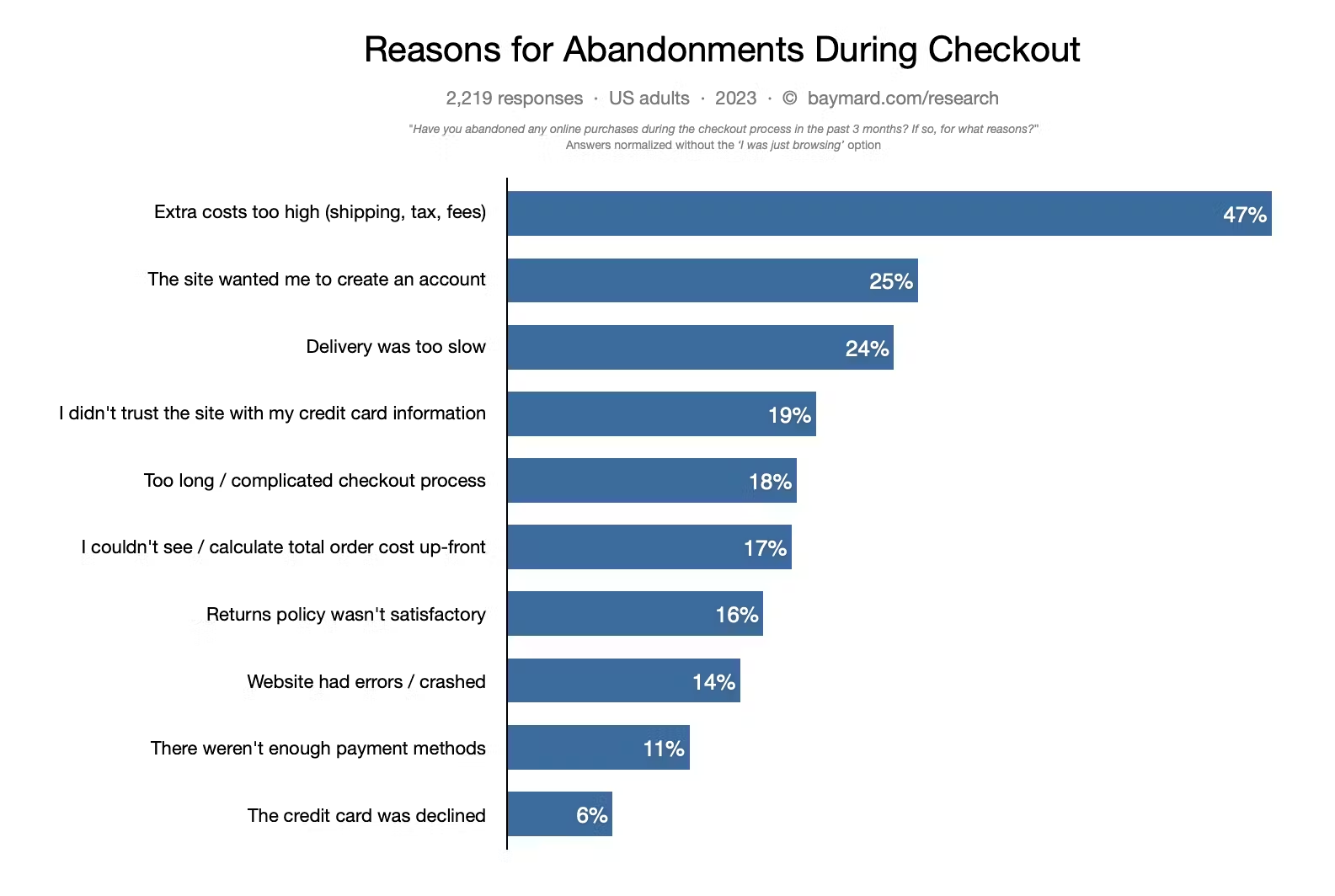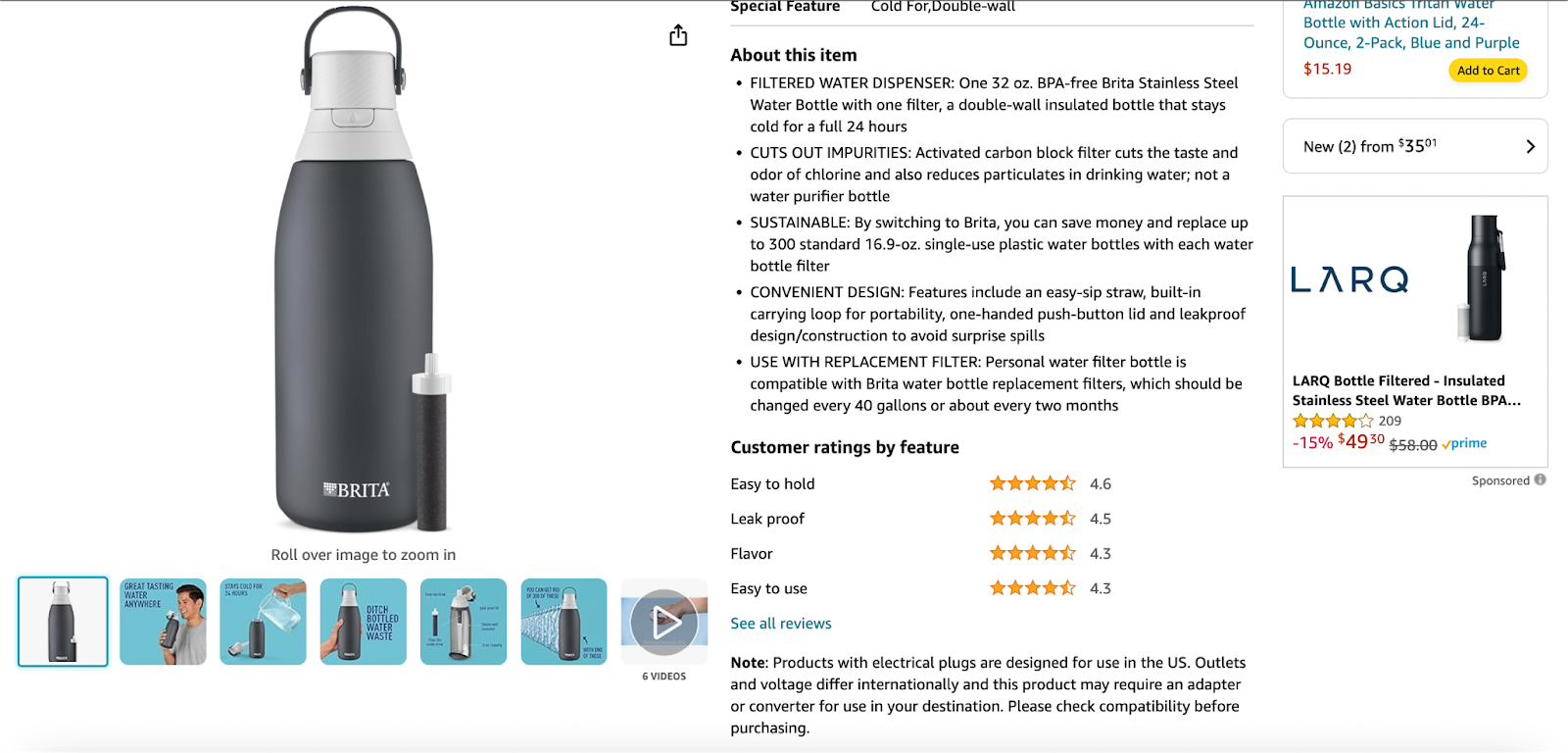12 Ecommerce Mistakes That Hinder Business Success in 2025

Embarking on a new ecommerce venture presents significant hurdles. With the digital marketplace growing increasingly saturated each year, sellers face mounting pressure to fine-tune every aspect of their marketing strategies.
In this fiercely competitive landscape, even minor oversights could impede your business’s progress, leading to low sales performance. Compounding the challenge is the fact that these pitfalls can manifest at any stage of the customer journey, making it difficult to pinpoint the root cause of the problem.
To shed light on this issue, we’re spotlighting the most prevalent mistakes you might be making in ecommerce marketing.
12 Common Ecommerce Mistakes to Avoid
Through our experience and research, we’ve identified 12 recurring challenges that often hinder ecommerce businesses from reaching their maximum potential.
1. Inadequate understanding of the target audience

Before formulating a sales strategy, it’s imperative to have a deep understanding of your target audience. Without thorough customer research, it becomes challenging to craft campaigns that resonate with the desires and pain points of your potential customers.
The more insights you gather about your buyers, the better positioned you are to appeal to them effectively. Begin by constructing customer personas that encapsulate common attributes of your audience, such as age, gender, income level, and professional role. Additionally, leveraging surveys, polls, and other feedback mechanisms enables you to directly gather insights from your website visitors and subscribers.
Moreover, modern social media monitoring tools offer valuable insights into how users interact with your brand. Publicly visible positive interactions with customers enhance your credibility and foster increased engagement on social media platforms. Even negative feedback can be turned into a positive outcome if you genuinely attempt to address the issue and improve the customer experience.
2. Selecting an unsuitable ecommerce platform
The choice of ecommerce platform significantly influences your marketing and sales strategies.
Typically, we’ve observed that WooCommerce and Shopify tend to be more suitable for smaller businesses, whereas BigCommerce and Magento are better suited for enterprises handling larger sales volumes. For more detailed insights, refer to our curated list of top ecommerce platforms.
Many ecommerce providers offer free demos or trials, allowing you to explore various options before making a final decision. It’s advisable to take advantage of these opportunities to test different platforms and assess their suitability for your business needs.
3. Unappealing website layout
Your website serves as the cornerstone of your digital presence, making it essential to develop a site that leaves visitors with a positive impression of your business and products. Leveraging website design tools enables you to craft a high-quality website that not only establishes but also nurtures your brand. While it may seem daunting for new sellers, investing in website development is one of the most valuable investments you can make for your brand’s growth.

However, when examining Zara’s website, while it possesses a certain appeal, there are fundamental issues with its design that may deter new visitors. Primarily, customers are greeted with limited information on the landing page. The visible options include searching, logging into their account, seeking assistance, or viewing the collection. The option to browse by category is concealed behind a small menu button in the upper-left corner.
Furthermore, Zara’s website leaves excessive white space, failing to utilize the area above the fold effectively (the space visible to users before scrolling down). While incorporating some white space can enhance readability and aesthetics, the surplus white space on Zara’s site appears vacant and lacks engaging content.
4. Ineffective marketing strategy
One of the most prevalent errors among new ecommerce sellers is the misconception that they can simply improvise their marketing strategies. In reality, successful digital campaigns require careful curation and ongoing testing.
Statistics reveal that a significant majority of new ecommerce ventures fail within their initial months. To thrive in this competitive landscape, you must develop a comprehensive strategy outlining how you’ll attract new customers and compel them to patronize your brand.
Embarking on a new digital marketing initiative necessitates a well-defined approach, accompanied by clearly articulated goals or performance benchmarks. Without these foundational elements, optimizing strategies and assessing past performance becomes challenging.
While the specifics of your strategies may vary, Contently’s diagram illustrates some common components of an effective marketing plan. Ecommerce benchmarks and Key Performance Indicators (KPIs) serve as reference points, enabling marketers to gauge the outcomes of each campaign. Over time, your marketing plan will evolve as you experiment with new approaches and deepen your understanding of your target audience.
5. Poor customer service

Friction can arise at any point throughout the sales cycle, emphasizing the need for a reliable customer service funnel to redirect leads when issues occur.
While human resources can be costly, automated chatbots offer a cost-effective solution for addressing basic inquiries without human intervention. Additionally, chatbots operate 24/7, ensuring swift responses to queries, eliminating the need for customers to endure prolonged wait times.
Implementing AI-powered chatbots has proven to be effective in enhancing customer service and lead generation. Businesses that have adopted such technology have experienced notable improvements in engagement and customer satisfaction.
6. Missing SEO content optimization
Search engine optimization (SEO) revolves around creating content that enhances your website’s visibility on Google and other prominent search engines.

According to SEO authority Ahrefs, 96.55% of all pages within their index receive no traffic from Google.. For new ecommerce merchants, it’s essential to ensure your site appears in searches related to your brand or products to reach potential customers.
Fortunately, platforms such as Ahrefs and Ubersuggest offer site owners free access to comprehensive SEO tools, with the option to upgrade to premium features if necessary. In addition to conducting basic keyword and competitor research, it’s crucial to focus on developing a robust backlink profile using top-notch link building tools. This strategy helps bolster your domain authority (website strength) and drive more traffic to your site.
7. Complex checkout process
By the time a visitor reaches your checkout sequence, you’ve completed most of the steps needed to secure a sale.
Despite its apparent simplicity, checkout is a significant factor contributing to abandoned carts in ecommerce. 18% of consumers admit to abandoning an order because of a lengthy or complex checkout process.

To reduce checkout abandonment, it’s essential to offer a guest checkout option, allowing customers to complete purchases without the need to create an account. While some ecommerce merchants insist on account creation to encourage subscriptions, this requirement often deters potential buyers and prompts them to rethink their purchase decision.
8. Lack of customer feedback
Regardless of the effectiveness of your marketing efforts, consumers inherently trust feedback from genuine buyers more than any promotional content you produce. Customer reviews and other forms of social proof serve as powerful endorsements that assure potential customers of the positive experience they can expect.
Major ecommerce platforms like Amazon prioritize customer feedback to instill confidence in their services. Similarly, it’s essential for your business to actively solicit feedback from existing customers, leveraging their experiences to provide social proof that attracts new leads.
9. Absence of credibility indicators
Customer reviews and social proof are essential for establishing your brand’s credibility, but incorporating additional trust signals can further enhance your store’s reputation, particularly for new vendors lacking extensive feedback.
Trust badges play a crucial role in conveying credibility to visitors by indicating compliance with relevant industry or security standards. For instance, the Verified SSL Secure Trust Badge signals that your website is secured via a Secure Socket Layer (SSL) connection.
Moreover, displaying trust badges associated with secure payment processing, such as the PayPal badge, can instill confidence in new visitors who may be unfamiliar with your brand, thereby bolstering your site’s credibility.
10. Non-mobile-optimized website
Failure to optimize your eCommerce website for mobile devices is a critical mistake in today’s digital age. With the prevalence of mobile phones, most users prefer browsing through their smartphones rather than using PCs or laptops.
Neglecting mobile optimization can lead to significant loss of potential customers, resulting in decreased sales and revenue. To mitigate this risk, it’s crucial to invest in a responsive website that seamlessly operates across different platforms, ensuring an optimal user experience regardless of the device used for access.
11. Insufficient description on product pages

Properly describing products or services on your online eCommerce store is crucial for attracting and convincing potential customers. Product pages serve as the cornerstone of online stores by outlining the features, benefits, and applications of the product, thereby showcasing its value proposition to customers.
Crafting compelling product descriptions is not overly complex; it involves listing out the benefits, use cases, processing instructions, ingredients (if applicable), and other relevant details.
Additionally, including high-resolution photos and, if necessary, a 360-degree view further enhances the customer’s understanding and perception of the product. This comprehensive approach aids in increasing sales and acquiring more customers in the long run.
12. Lack of website security
Security represents another critical aspect of your eCommerce platform:
In addition to establishing and managing it, ensuring the security of your website against malicious software and other threats is paramount. If your site lacks adequate security measures, it can erode customer trust, significantly impacting the success and longevity of your eCommerce venture.
So, what steps can you take to bolster security?
-
To enhance security, the initial step post-domain acquisition is to install an SSL certificate.
-
Employ robust passwords and implement a two-step authentication process to fortify your website’s defenses.
-
Avoid enabling social logins without two-step authentication to prevent unauthorized access.
-
Continuously monitor and adopt new security protocols to augment your website’s features and credibility.
Conclusion
Ecommerce transcends mere online product sales. To effectively compete and attract consumers within your niche, it’s essential to steer clear of common ecommerce pitfalls.
While success in ecommerce is never guaranteed, adhering to our guide will significantly bolster your brand development efforts.






![Top 20+ Must-have Shopify Apps for 2025 [Free & Paid] - Mageplaza](https://cdn2.mageplaza.com/media/blog/must-have-shopify-apps/top-must-have-shopify-apps.png)
![[2025 Updates] Top 10+ Upsell Apps for Shopify - Mageplaza](https://cdn2.mageplaza.com/media/blog/best-upsell-shopify-app/cover.png)